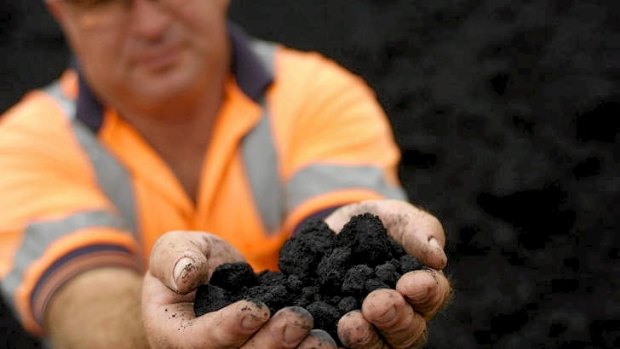This was published 11 years ago
Australia's carbon abatement imports target revealed
Australia will need to import about 100 million tonnes of carbon abatement in 2020 to meet its greenhouse gas reduction targets, the first official emissions projections since Australia imposed a price on carbon found on Wednesday.
Australia introduced a $23 per tonne carbon tax on around 300 of the nation's biggest polluters from July this year and will move to an emissions trading scheme from 2015, with plans to link the scheme with the European carbon market from 2018.

Carbon abatement: cheaper to import than do it at home. Photo source: Xstrata 1410_Mimg2_bb3a782ed5a2ba13367e3c383f9dce65.jpg
Under the link with Europe, Australian companies can use European allowances for up to half of their carbon liabilities from July 2015, while European companies will need to wait until 2018 to use Australian allowances.
Australia has a target to cut emissions by 5 percent of year 2000 levels by 2020 and the latest greenhouse emissions projections said the carbon price would help Australia reach its goal of 537 million tonnes of emissions, from an average 575 million tonnes between 2008 to 2012.
The official projections said by 2030, Australian emissions would fall further to 396 million tonnes, with 235 million tonnes of abatement expected to come from overseas.
Australia, a major coal exporter, is one of the world's highest per capita emitters of the pollutants blamed for causing global warming, largely because of its reliance on coal-fired power stations for around 80 percent of domestic electricity.
The carbon price has been a central policy for Prime Minister Julia Gillard despite fierce political opposition, with the carbon tax blamed for higher electricity prices and with the conservative opposition promising to scrap the plan if it wins power at the next elections, due in late 2013.
But the new greenhouse projections said the price on carbon would decouple emissions growth from economic and population growth in Australia for the fist time.
It said by 2030, Australian emissions would fall to 13 tonnes per person each year, down from the current 25 tonnes a year per person.
The latest data shows electricity generation remains the largest source of Australian emissions, accounting for 34 percent of total emissions in 2011. Burning fuel accounts for 17 percent of emissions, followed by transport with 15 percent and agriculture, which accounts for 14 percent of emissions.
Reuters